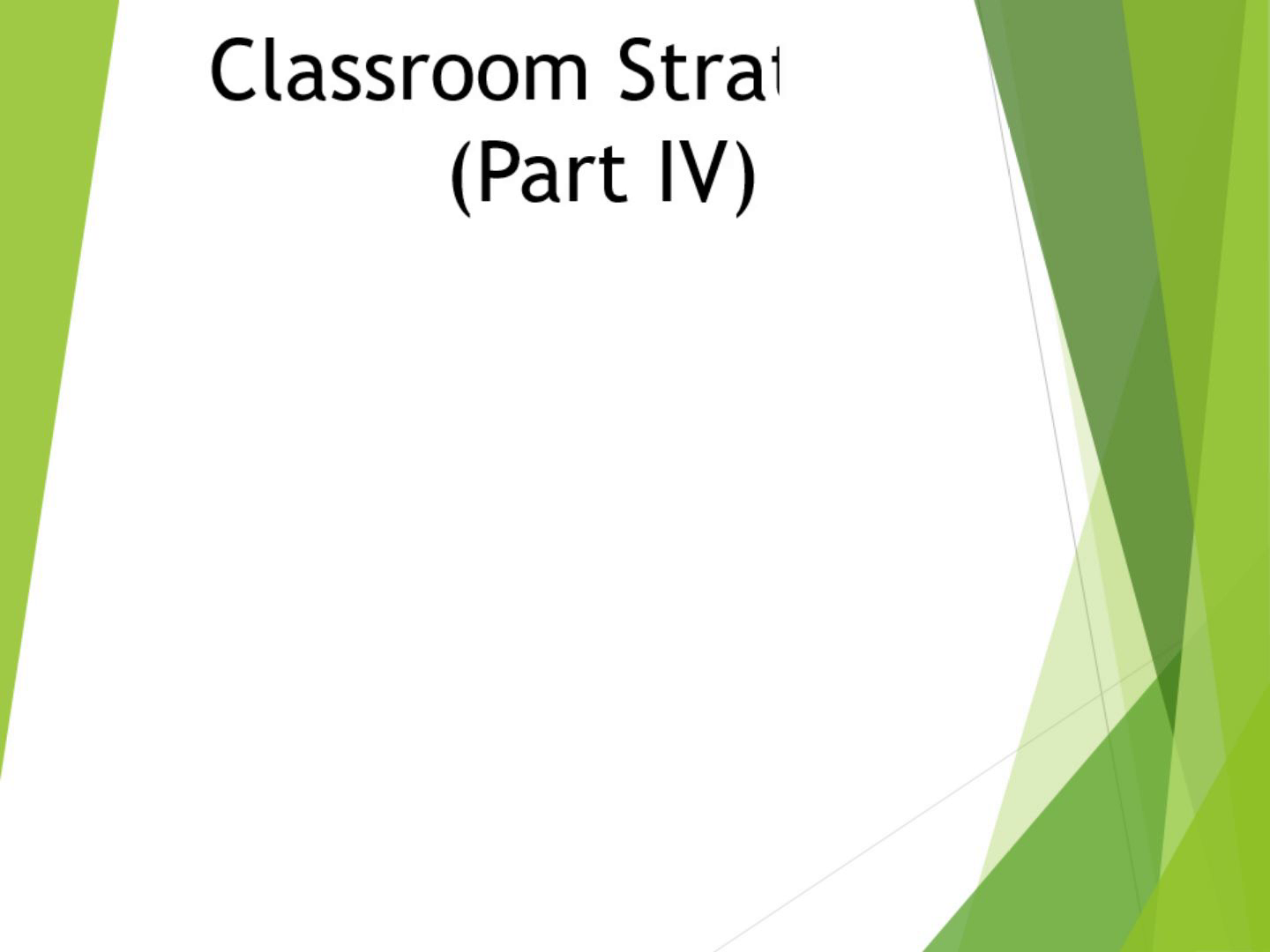
Classroom Strategies (Part IV)
Scene 1 (0s)
Classroom Strategies (Part IV). s SOUTHWEST ISD SPECIAL EDUCATION Empowering Unique Minds, Shaping Bright Futures.
Scene 2 (10s)
[Audio] Classroom strategies, part 4 This instructional module will cover. Setting Easily Attainable Goals. Praising Behaviorally Appropriate Students. Providing Nonverbal Signals for Appropriate Behavior..
Scene 3 (29s)
[Audio] Setting Easily Attainable Goals. Research backs up the effectiveness of goal setting, both for the students themselves and for school systems overall..
Scene 4 (39s)
[Audio] When teachers practice good goal setting, the benefits for their students are two-fold. "1." The students will see effective goal setting modeled. "And 2."The school itself is likely to become more effective at facilitating learning..
Scene 5 (55s)
[Audio] Aside from helping them believe in themselves and setting them up for success in school, "goal setting," also benefits students in many ways, including. Improving self-image. Increasing awareness of the student's strengths. Providing an experience of success. Encouraging prioritization. Building responsibility. Improving decision making..
Scene 6 (1m 21s)
[Audio] In the school setting, goals are developed by teachers for specific student's instruction and guidance, as well as by students for their own personal growth..
Scene 7 (1m 37s)
[Audio] "Smart Goals." The acronym SMART stands for. Specific. Measurable. Attainable. Relevant. And Time-bound..
Scene 8 (1m 55s)
[Audio] Specific. There should be no confusion when it comes to setting goals. Be clear and concise about what you want the student to achieve..
Scene 9 (2m 8s)
[Audio] Measurable. The teacher needs to establish methods of tracking progress and determining when the goal is attained..
Scene 10 (2m 19s)
[Audio] Achievable. Make sure the goal is attainable by considering the resources and supports needed, as well as any possible challenges that may be encountered..
Scene 11 (2m 33s)
[Audio] Relevant. It should have a direct, and positive impact on the student. Can it help the student stay involved and increase their academic competence? Some examples include staying organized, and improving problem-solving skills..
Scene 12 (2m 51s)
[Audio] Time-bound. Set a definite deadline by which the student will complete the goal. Review benchmark data along the way to determine if the student is on track to mastering the goal..
Scene 13 (3m 7s)
[Audio] Praising Behaviorally Appropriate Students. Teachers who use praise regularly tend to have better relationships with their students. They lose less instructional time and see fewer behavior issues. A study looking at practices that reduce problem behaviors in classrooms, identified teacher praise as one of the top five most effective practices..
Scene 14 (3m 36s)
[Audio] "Behavior-specific praise" lets students know what they are doing correctly. To give behavior-specific praise, you clearly tell students what they've done correctly. For example, if you have a student for whom organization is an issue, you could say, "Nice work getting your homework out of your "folder" and placing it in the bin the first thing this morning.".
Scene 15 (4m 6s)
[Audio] Providing Nonverbal Signals. Why should a "teacher" use nonverbal signals? It creates a working relationship with the student without calling attention to the student in a negative manner. Is discrete and quick. It saves instructional time..
Scene 16 (4m 30s)
[Audio] "Also." It makes students more comfortable and likely to participate and be involved. It is easy to do and effective. It improves and builds student confidence and self-esteem..
Scene 17 (4m 49s)
[Audio] When should teachers do it? When a student is losing attention and focus during times of instruction or independent work. As a form of redirection from "misbehavior", "talking out of turn", or off task behaviors..
Scene 18 (5m 7s)
[Audio] "Also." When a student is not following, classroom or school procedures. When a student does something good, correctly, or successfully..
Scene 19 (5m 19s)
[Audio] How do I do it? Meet with students individually to identify how you and they should communicate in a special way. Use cues like smiles, or shaking your head "yes" to praise students for correct behaviors. For example: for participation, volunteering, or just to reassure and encourage them..
Scene 20 (5m 45s)
[Audio] Use simple cues like shaking your head "no." Raising an eyebrow, giving a "one minute" finger signal. Or discretely pulling on your earlobe to "redirect" a student..
Scene 21 (6m 2s)
[Audio] Contributors. Beya Moray, Educational Diagnostician Steffanie Sparrow, Licensed Specialist in School Psychology Mario Bernal, Licensed Specialist in School Psychology Valerie Torres, Licensed Specialist in School Psychology And Ruth Viagas Graduate Student.
Scene 22 (6m 23s)
[Audio] End of. Classroom Strategies (Part 4). End of Classroom Strategies (Part IV).